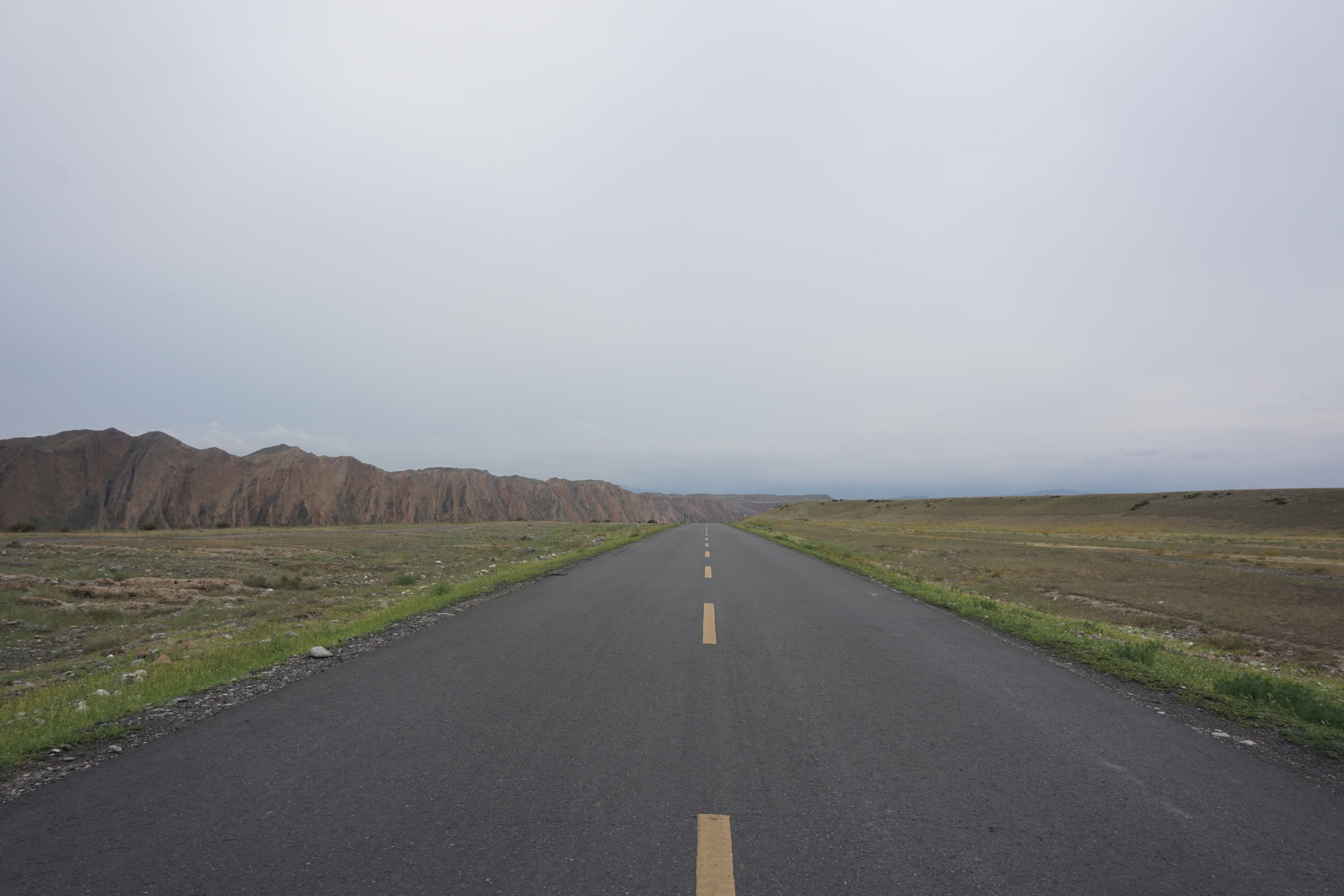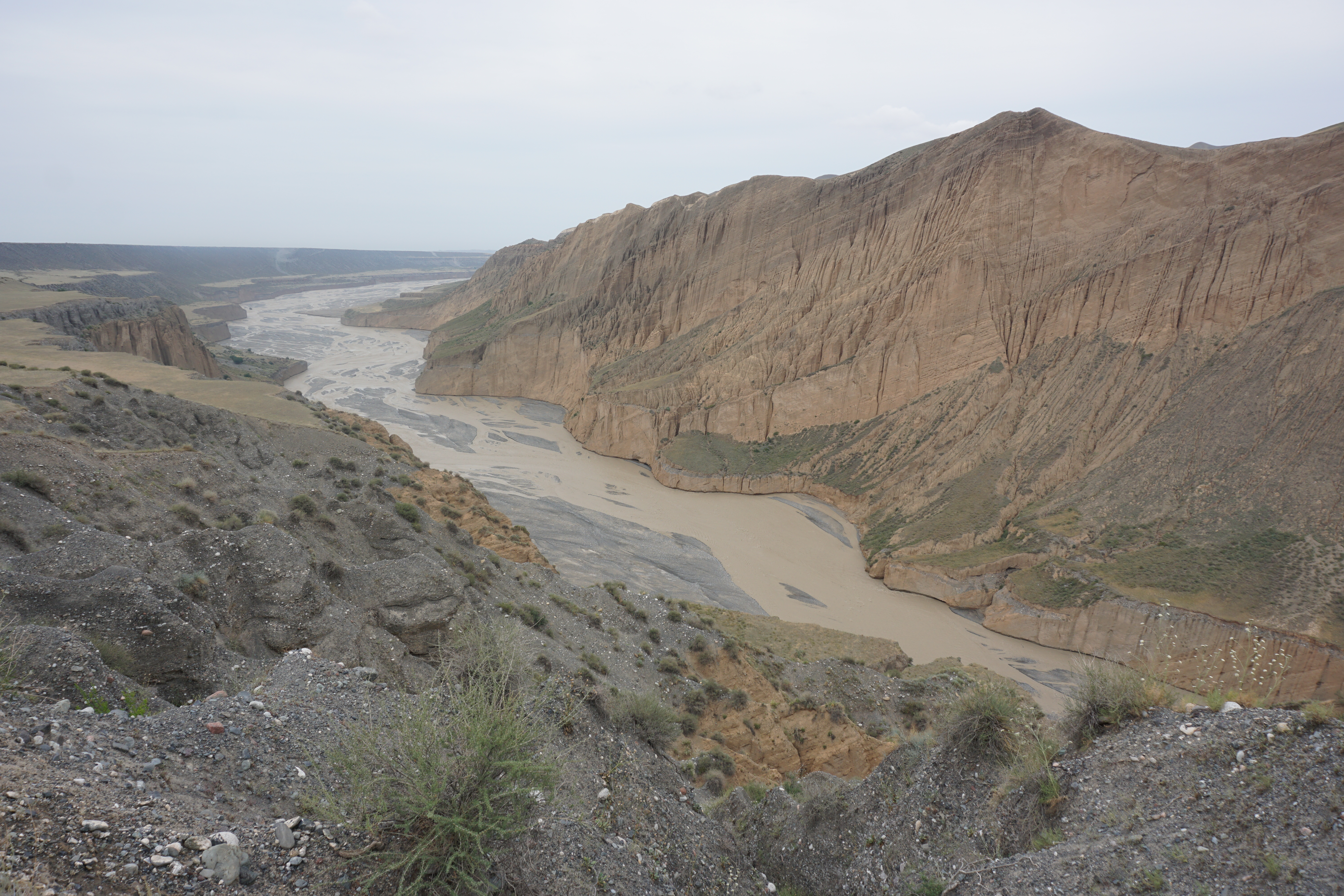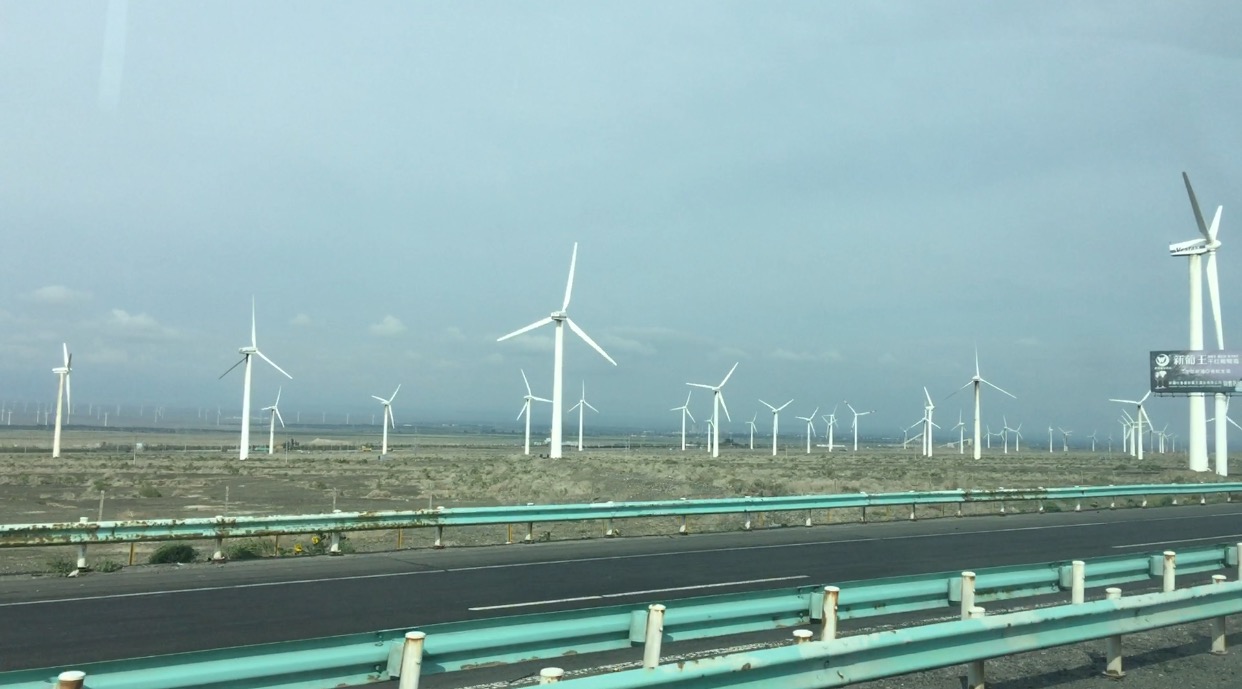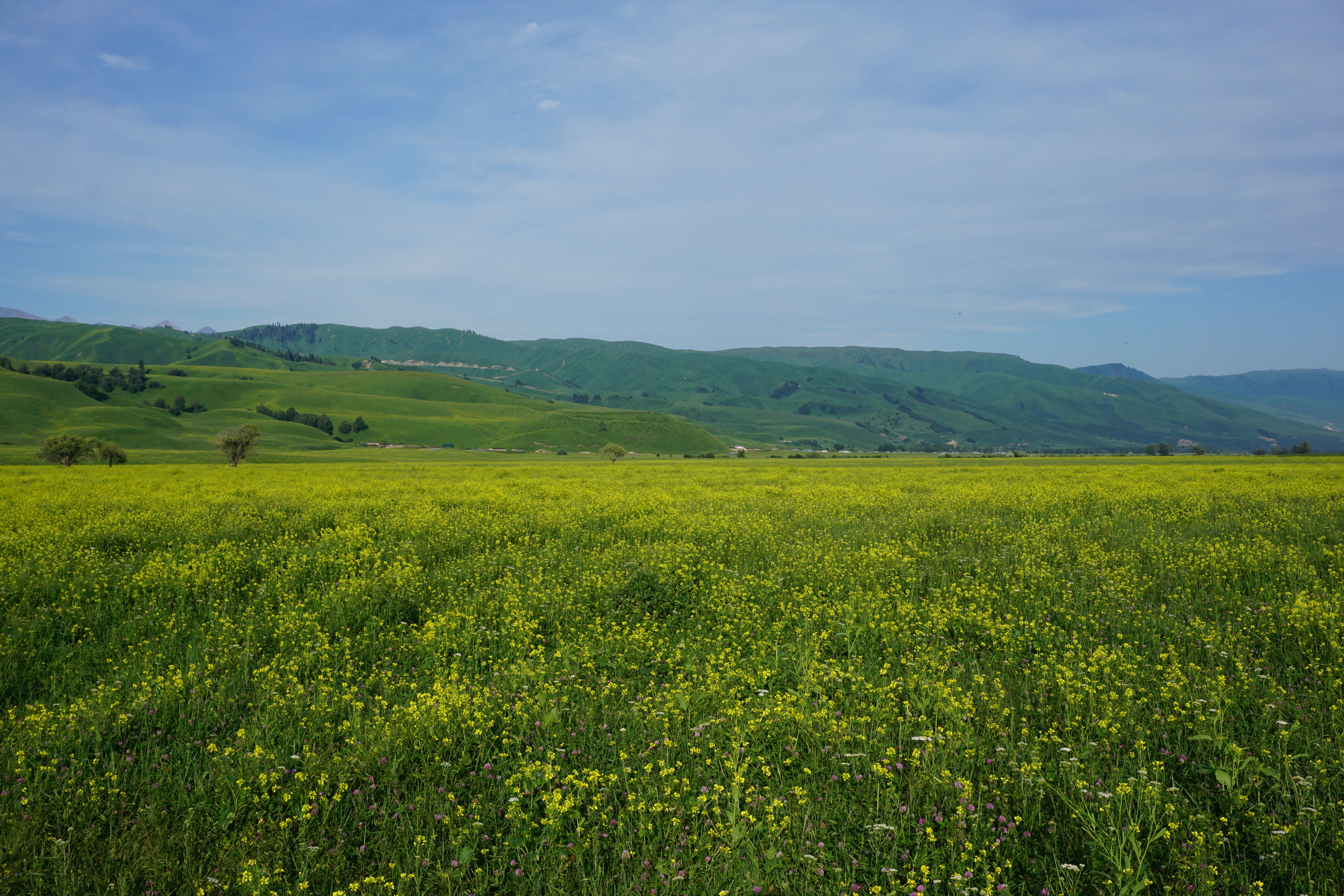In the middle of July, the warnings of high-temperatures were given continuously. And North-west China was always covered by a rich red, which represented the highest temperature. Concerned about the hot weather there, I crossed thousands of miles, arriving in Xinjiang province with anticipation.
As someone born in southern China, I grew up in a city full of skyscrapers and lived in plenty. I’ve seen the sea. I’ve been to the highest point of the city. My city is surrounded by thriving plants. However, the desert and the grassland were nothing but descriptions in books and pictures on the Internet to me. But this time in Xinjiang, I flew over the tall buildings and said goodbye to the sea, to embrace a brand new world.

No end could be seen on this road.
At the beginning of my journey, I was speeding along the roads between mountains, which are covered by desert. The soil here is of poor condition, resulting from the dry climate. Therefore, desert covers a wide area here, which differs from the southern China. In the desert, there is almost no green but only grey and brown. Sometimes, you can see some plants struggling in the strong wind, but they are also very weak and struggle to survive. However, a unique scenery can be seen on this barren land – hundreds of wind turbines standing in the desert. This was my first time to see the wind power generation stations. The wind in Xinjiang is strong enough to overturn cars, kill the plants or even blow away people. But at the same time, it means an abundant wind energy. These wind turbines standing in the desert generate huge energy and transmit it to other provinces, supporting the electricity supply of the whole country, kindling a hope on the barren land.

The gorge in the desert.

The wind turbines kindled a hope on the barren land.
As I traveled west, the scenery outside the window changed gradually. Green came into view instead of grey and I spent the rest of my tour wandering around the vast expanse of grassland and pastureland. I went to the Bayanbulak Grassland and the Narati pastureland this time. There, I became the daughter of the grassland, roaming in the green, capturing the breath-taking views and sniffing the flavour of nature. Roaming on the grassland, we may encounter flocks of sheep. They are like white flowers decorating the green grassland. There are many nomadic people living in Xinjiang. In summer, they chase the green and migrate to wherever there is water and grass. Building yurts on the grassland, herding goats and cattle for a living, they live the simplest life here below the azure sky. I am quite envious of this kind of life in the nature.

A herd of sheep on the Bayanbulak Grassland.

The Narati pastureland.
Time flies. I spent eight days living in the nature in Xinjiang. It was quite a memorable trip for a southern girl like me to return to nature. After saying goodbye to the grassland, pastureland and desert, my home in southern China was welcoming me again.

